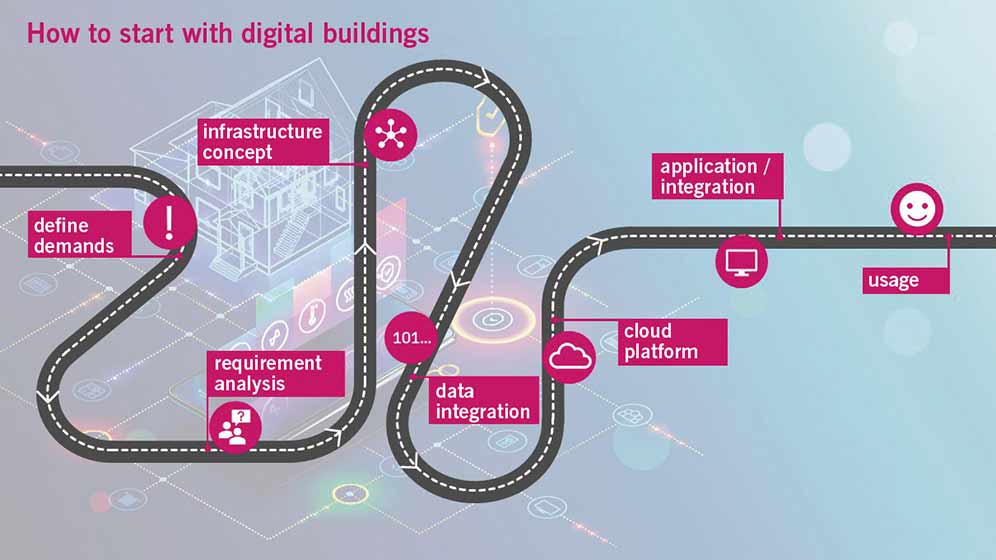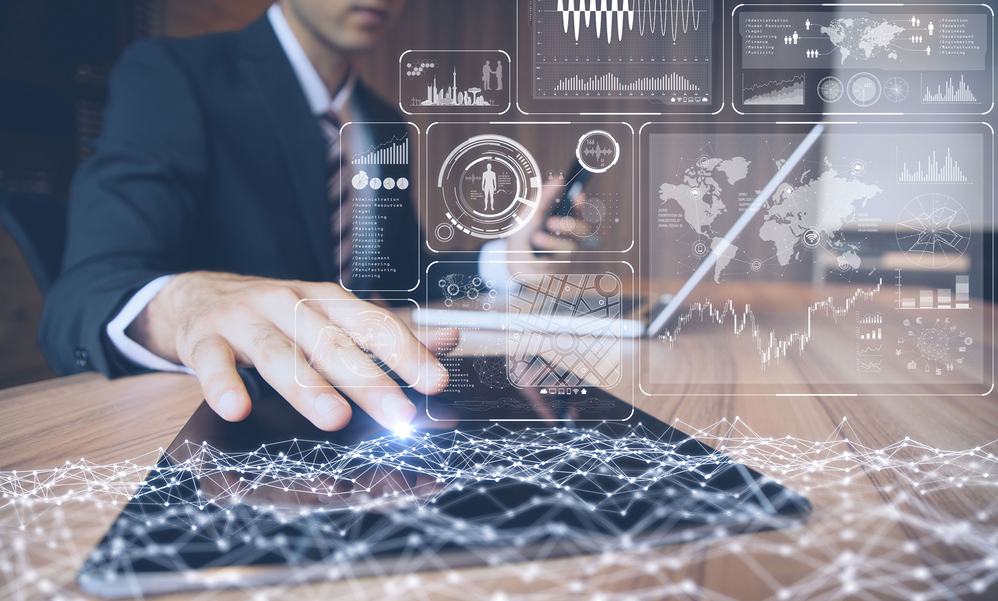T-Systems: Where do we go from here? Work from home or everyone back to the office?
Issue 02-2021:
read all articles online
read as pdf
The COVID-19 pandemic gave a boost to the digital transformation strategies of companies. Business and management processes were put to the test and digitized. Employees were given the opportunity to access and process company data digitally. For a long time, work was centered on the home desk.
The requirement to work from home in Germany was lifted on July 1, 2021. However, it’s still necessary to adhere to the latest hygiene guidelines, with the result that in some circumstances not all workstations can be used at the same time.
How can office desks be distributed and assigned so flexibly that everyone who wants a workstation can have one and no one has to return home? Digitizing office space starts here and enables efficient management. It also makes sense to include the capacity utilization of cafeterias, meeting rooms and other gathering points such as break rooms in planning.

IoT-based post-COVID strategy for companies
Using IoT solutions, experts at T-Systems MMS and EnOcean worked with the customer to develop a concept for a post-COVID approach. The goal was to bring employees back to the office and monitor the number of people per square meter in compliance with the General Data Protection Regulation (GDPR). However, launching this type of “digital building” project isn’t just a matter of attaching sensors to desks. Such a comprehensive change project entails a certain degree of complexity – for example, in terms of “connectivity,” “cloud platform,” the “application” itself, “system integration,” and “installation/activation/maintenance.”
The first step is to consider the requirements. Which rooms will be equipped with sensors and why? Should the focus be on an effective use of space, on adapting energy consumption to utilization, on avoiding unused space, and/or on ensuring demand-driven cleaning and disinfection?
Next comes an analysis of the requirements. A digital floor plan might be necessary in order to digitally map rooms. As part of the requirements analysis, we also check which sensors are present and what kind of connectivity is available – for example, WLAN, LoRa (WAN), NB-IoT, or Bluetooth.
One highly relevant point that’s often underestimated is the presence of data or data streams relating to the buildings and spaces. We need to clarify who they belong to and the extent to which they can be accessed, for example, to display capacity utilization on a dashboard.
Finally, we develop a concept that includes, for example, integration of the solution for booking individual workstations into an employee app or another existing system. For the provision of data, different approaches are also possible, depending on the existing connectivity system, cloud, or on-premise availability as well as the ability to integrate sensors and actuators.
Interoperability for future upgrades
We collaborate with the customer, EnOcean, and the necessary partners to ensure the highest possible degree of utilization by employees as well as an efficient capacity utilization rate for facility management monitoring. If the customer uses the interoperable Smart Spaces platform from T-Systems MMS, the company will be able to integrate and implement additional use cases individually in the future. This is not possible with a manufacturer’s proprietary system.
New articles in Smart Spaces
Top articles





